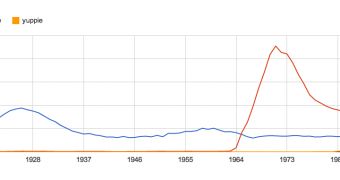Ngram Viewer is one of those tools that sounds like it would only appeal to a couple of people. And maybe it does appeal to a couple of people, but those two people are having a hell of a time with it. And it's going to get better as Google is now debuting Ngram Viewer 2.0.
Ngram Viewer allows users to scour through Google's huge library of scanned books and search for the popularity of phrases in time.
To everyone's surprise, including Google's, the tool has been very popular not just with linguists or scientists, but with regular inquisitive people as well. In fact, Google says the site saw some 50 queries per minute since it launched.
The latest version beefs up its capabilities quite a lot. For one, it uses a bigger book repository, everything Google has scanned so far.
There are also improvements to the optical character recognition, so more words will be recognized, and some improvements to the metadata.
But that's not all; Ngram Viewer 2.0 can handle much more complex queries. For one, it can differentiate between different uses of the same word, for example whether it's used as a verb or as a noun.
"Last summer Slav Petrov of Google’s Natural Language Processing group and his intern Yuri Lin (who’s since joined Google full-time) built a system that identified parts of speech—nouns, adverbs, conjunctions and so forth—for all of the words in the millions of Ngram Viewer books," Google explained.
Another interesting addition is the ability to add, subtract, multiply, and divide queries, so you can see how multiple words grew or diminished in popularity or how one word fared at the expense of another. More info on the syntax is available here.
The tool works in Italian now, on top of the already supported English, Chinese, Spanish, French, German, Hebrew and Russian.

 14 DAY TRIAL //
14 DAY TRIAL //